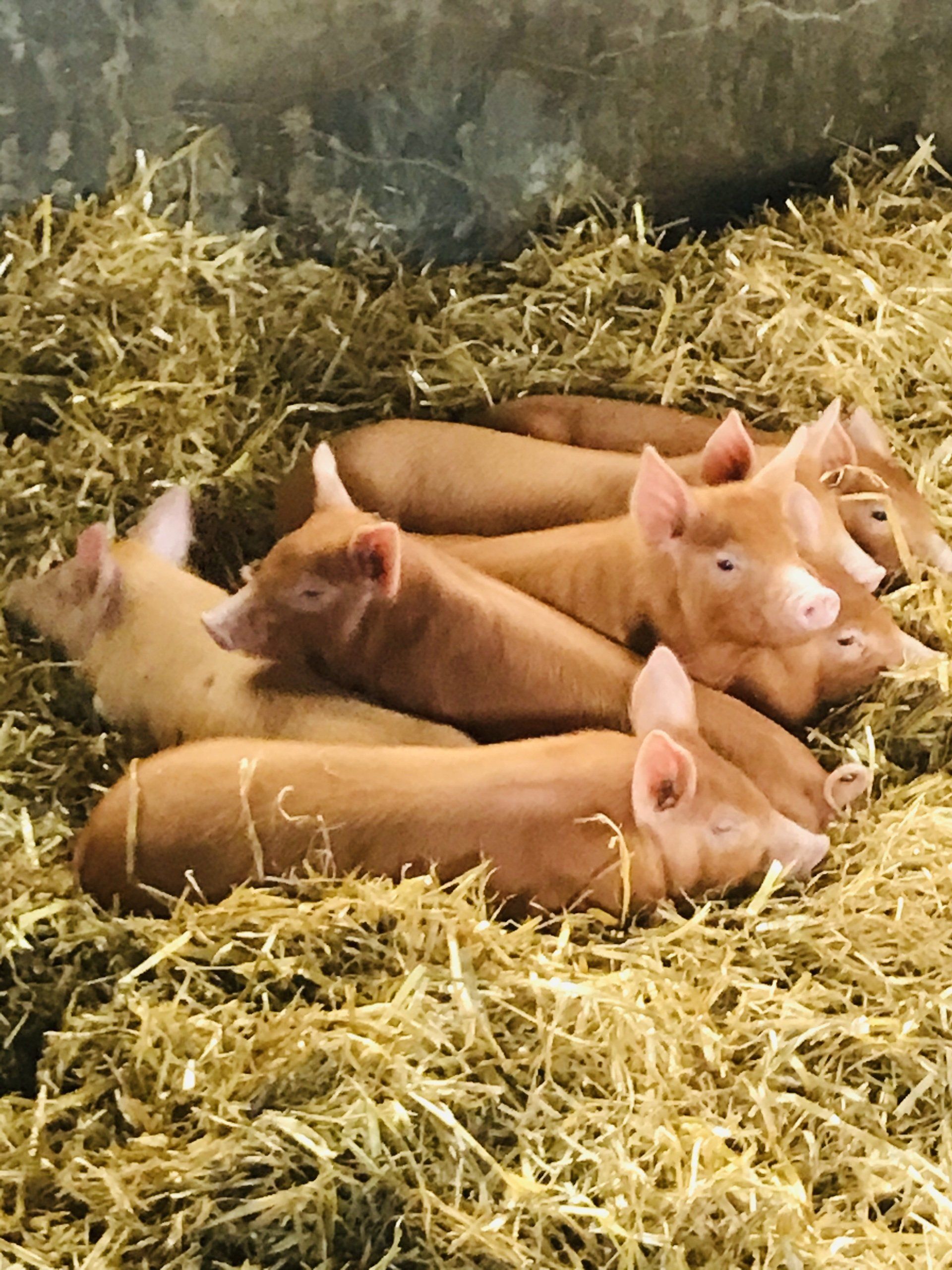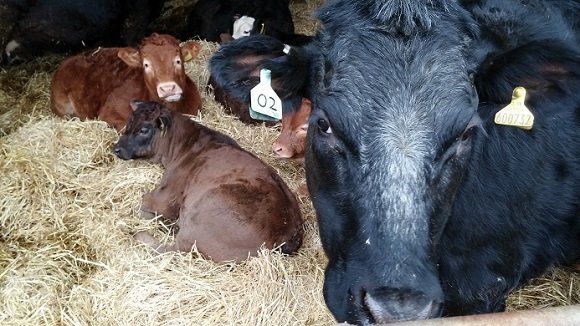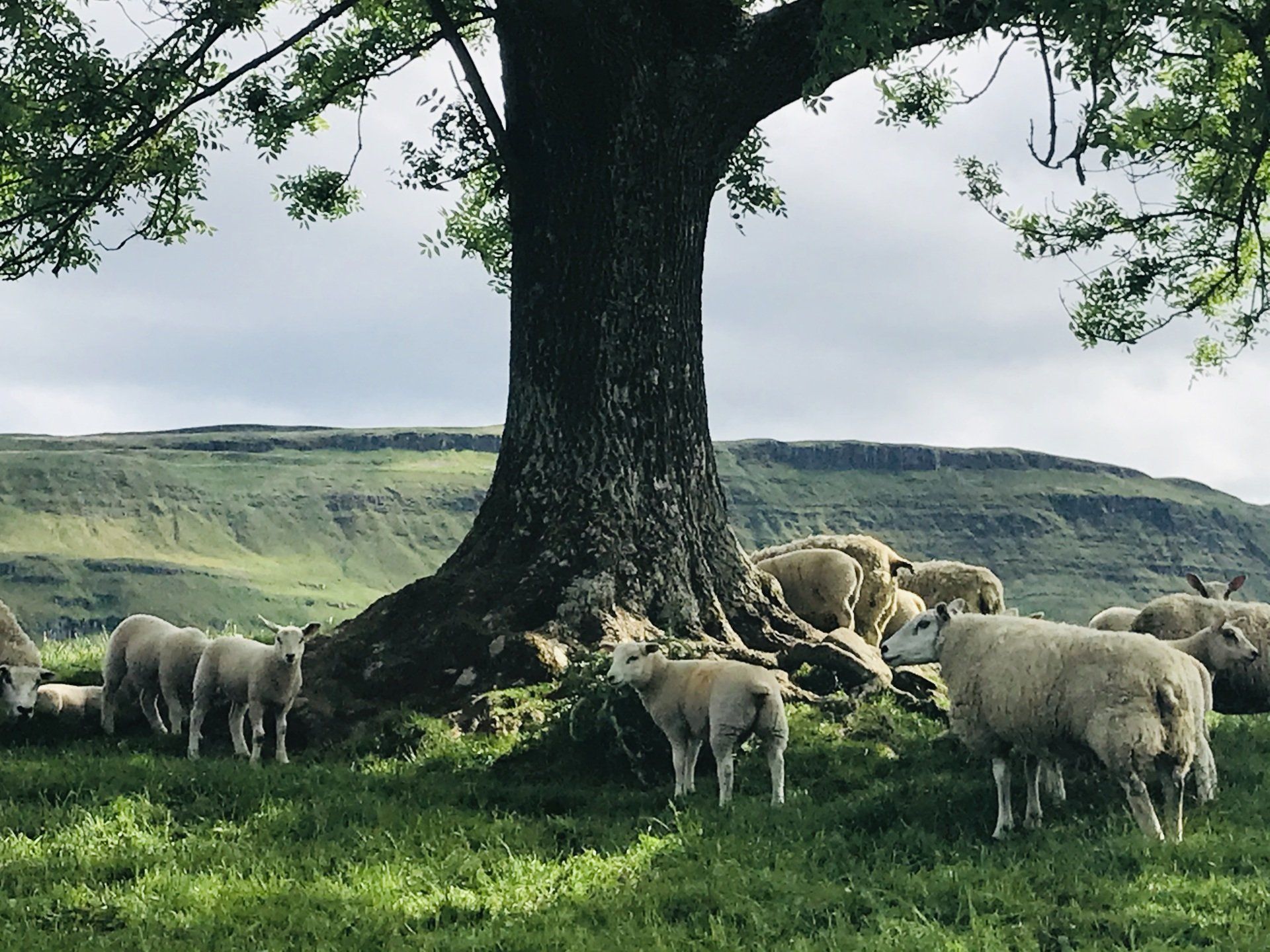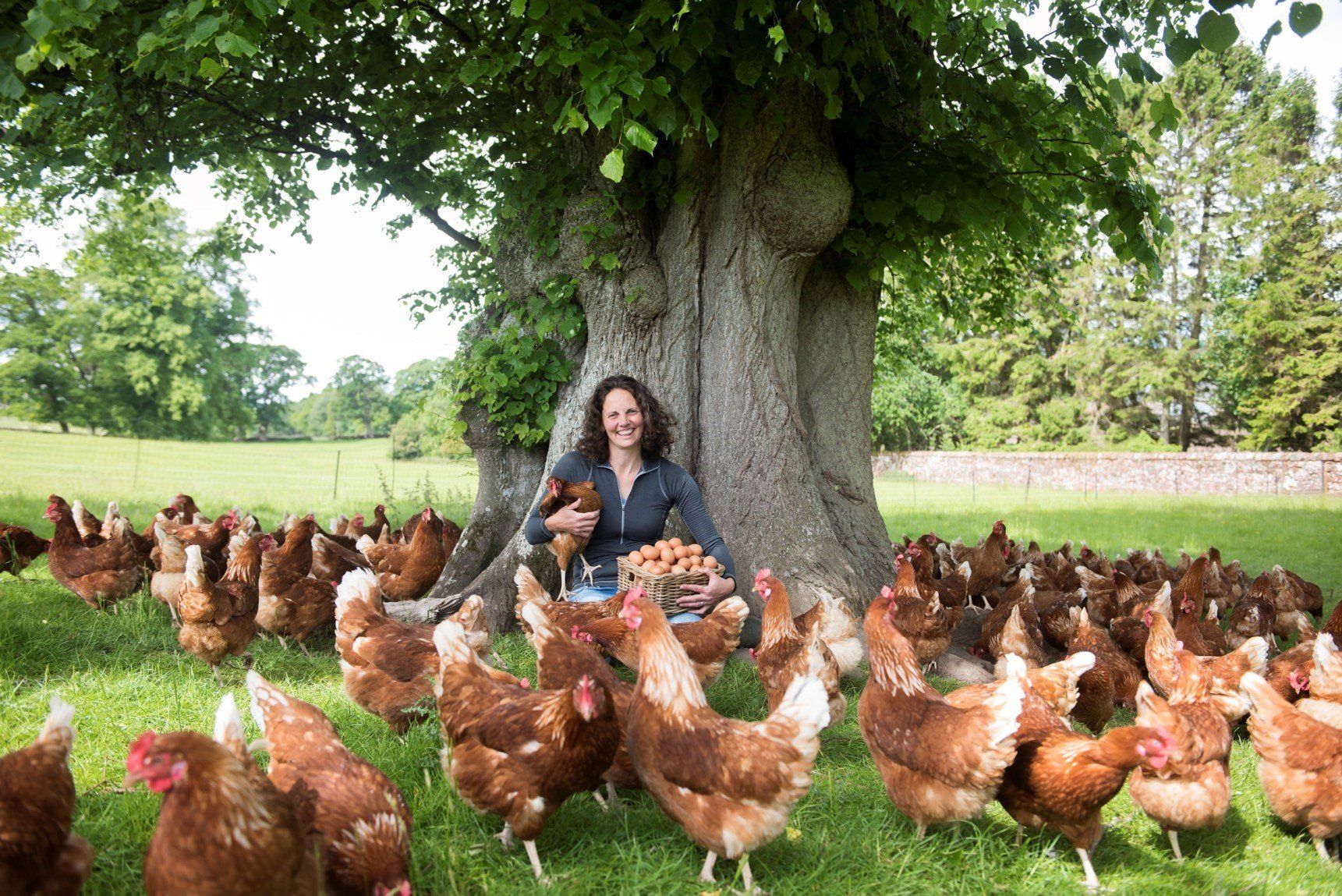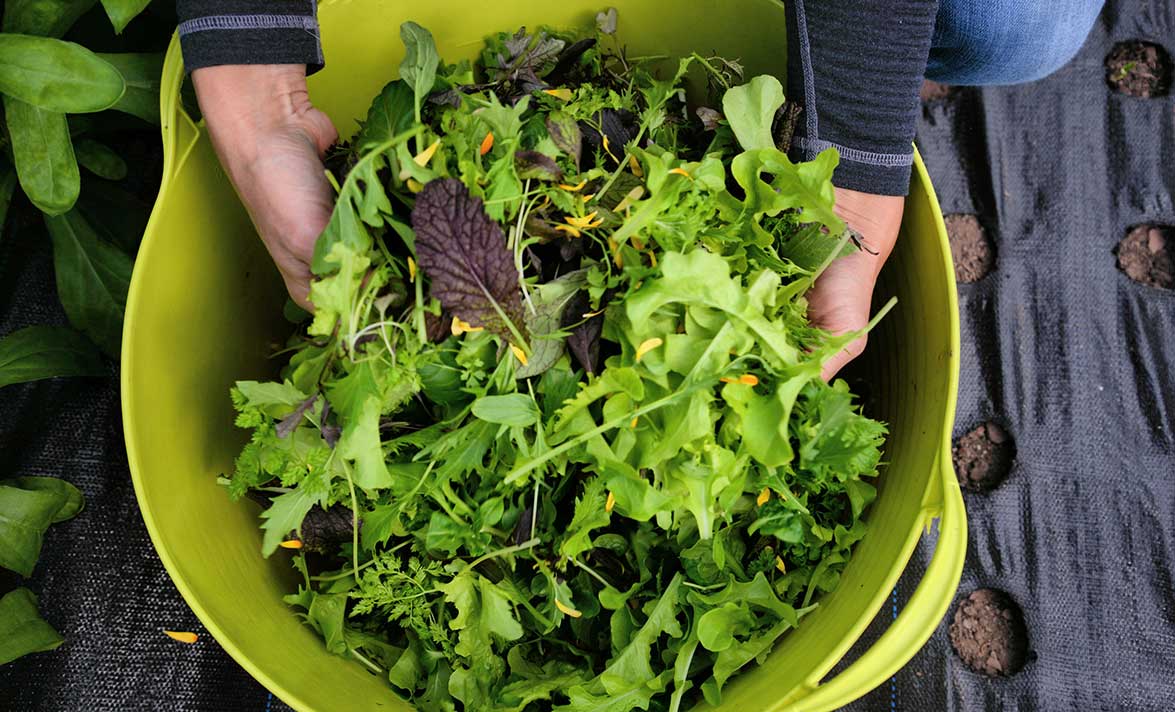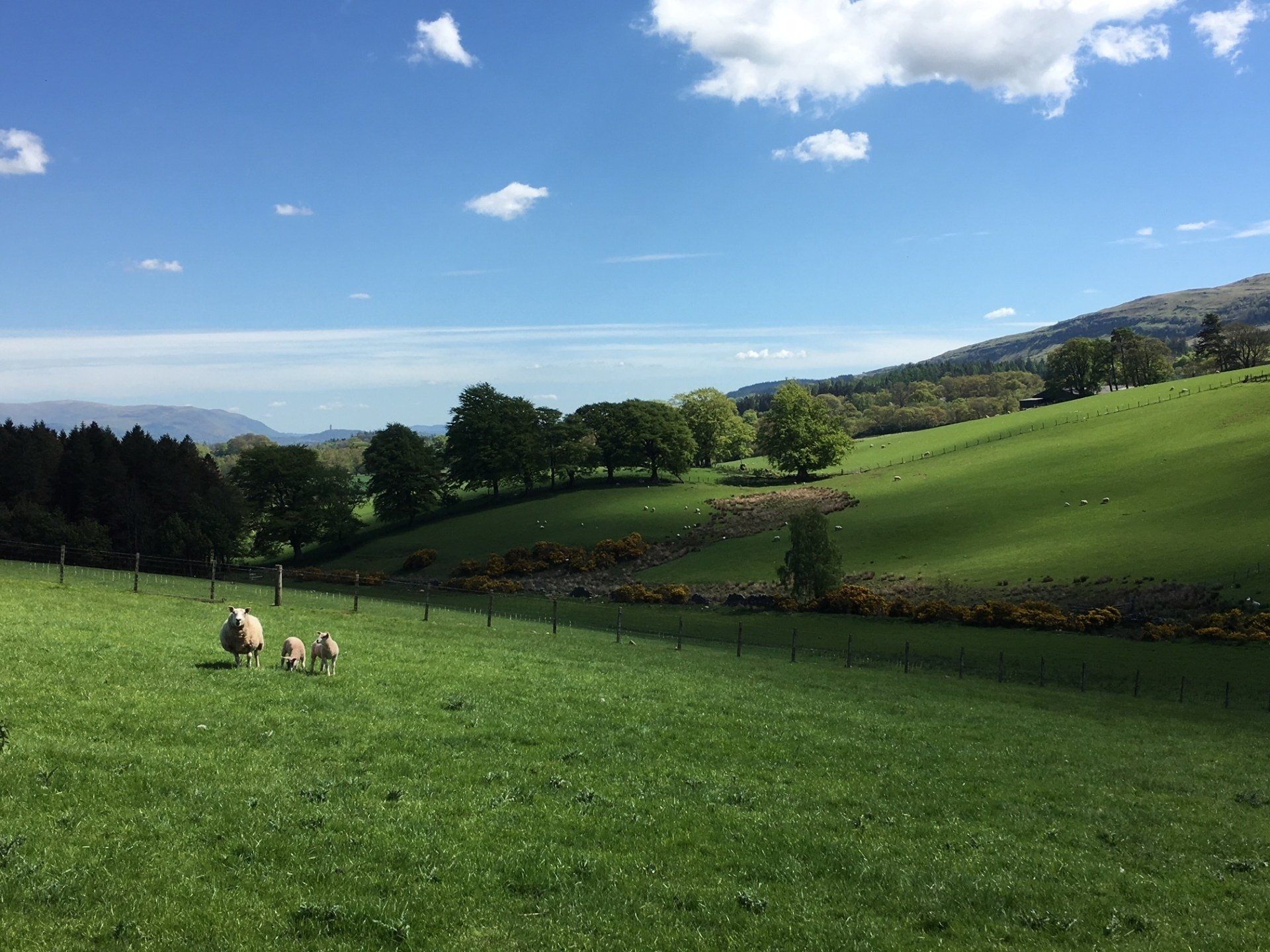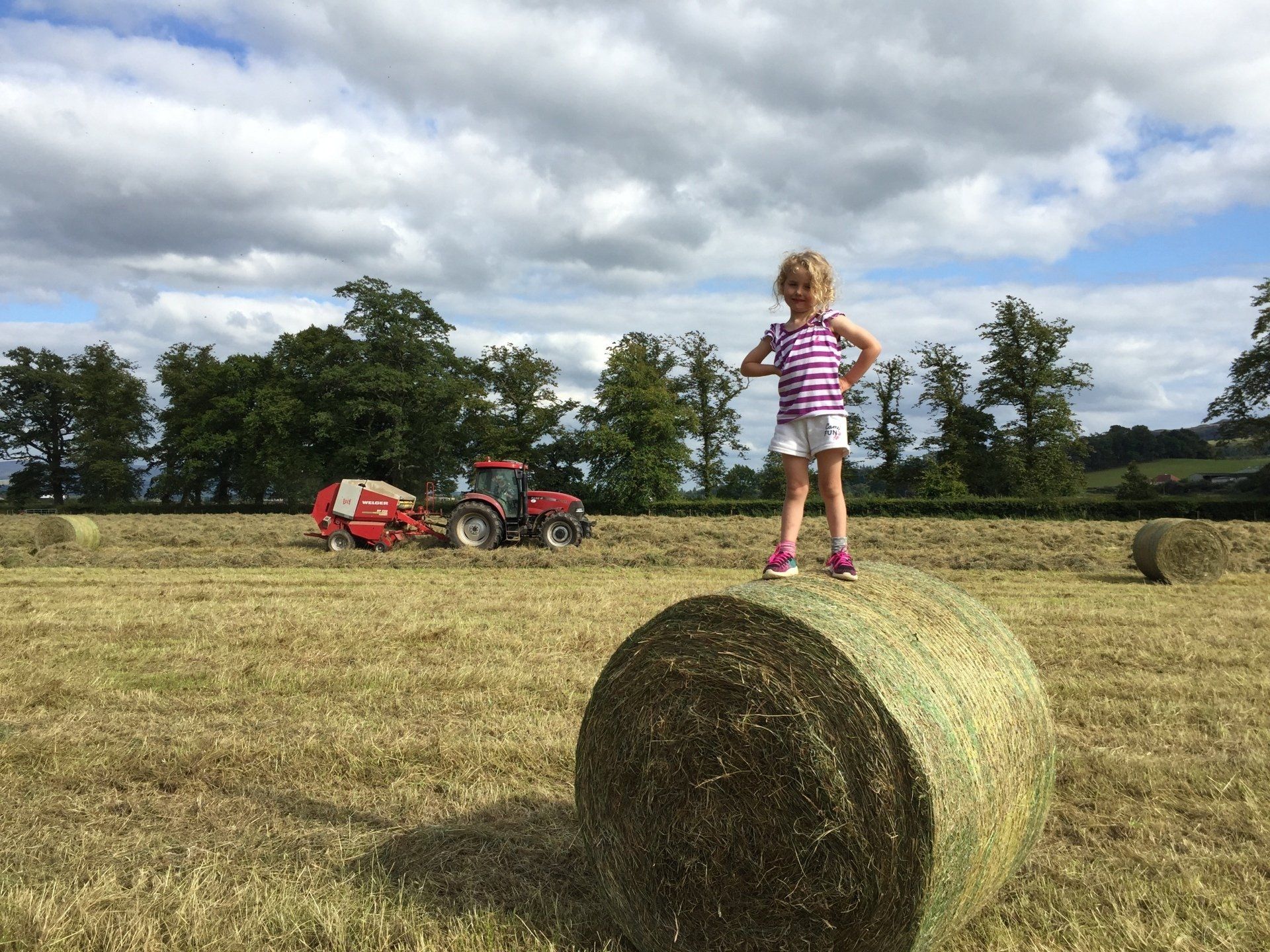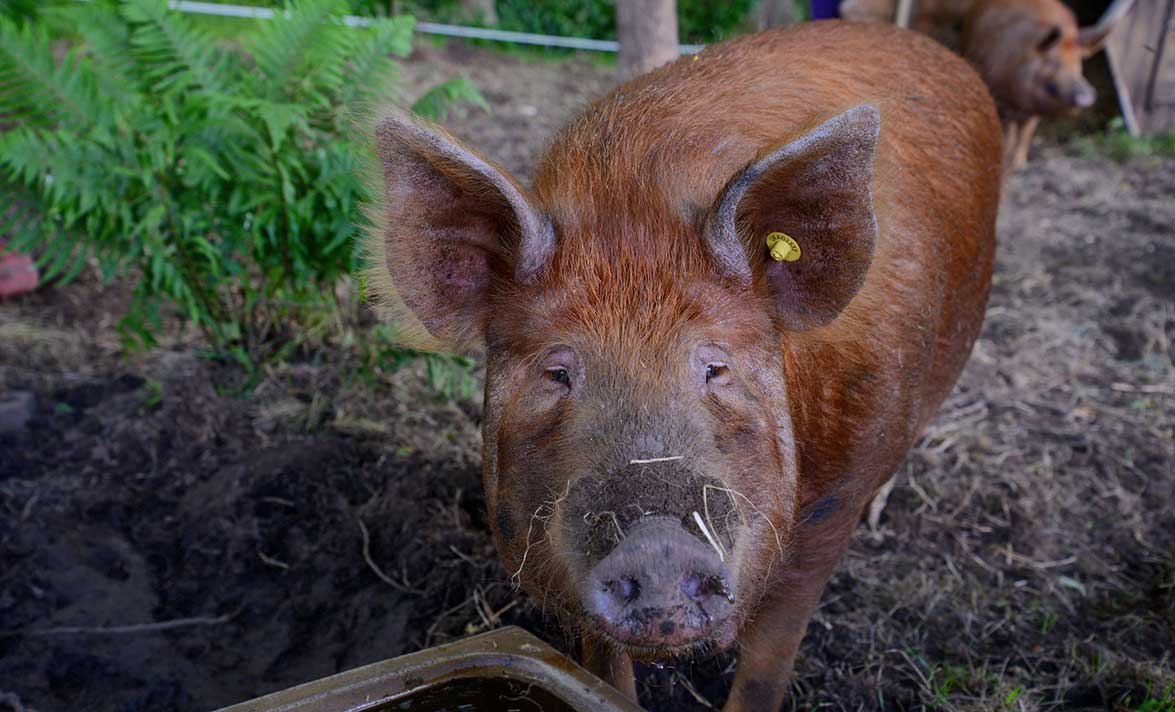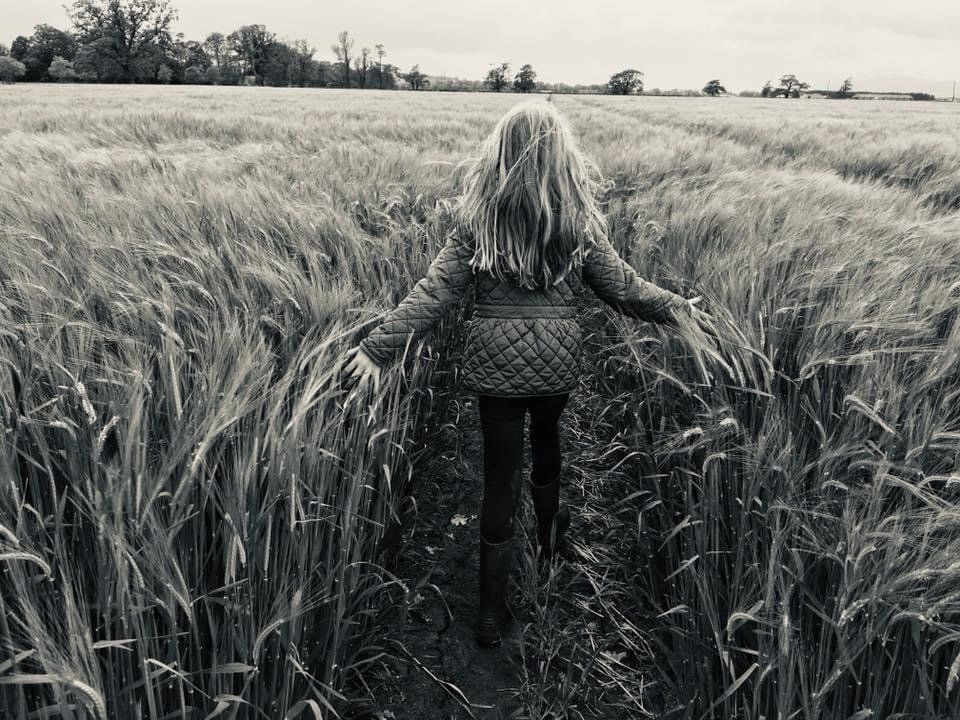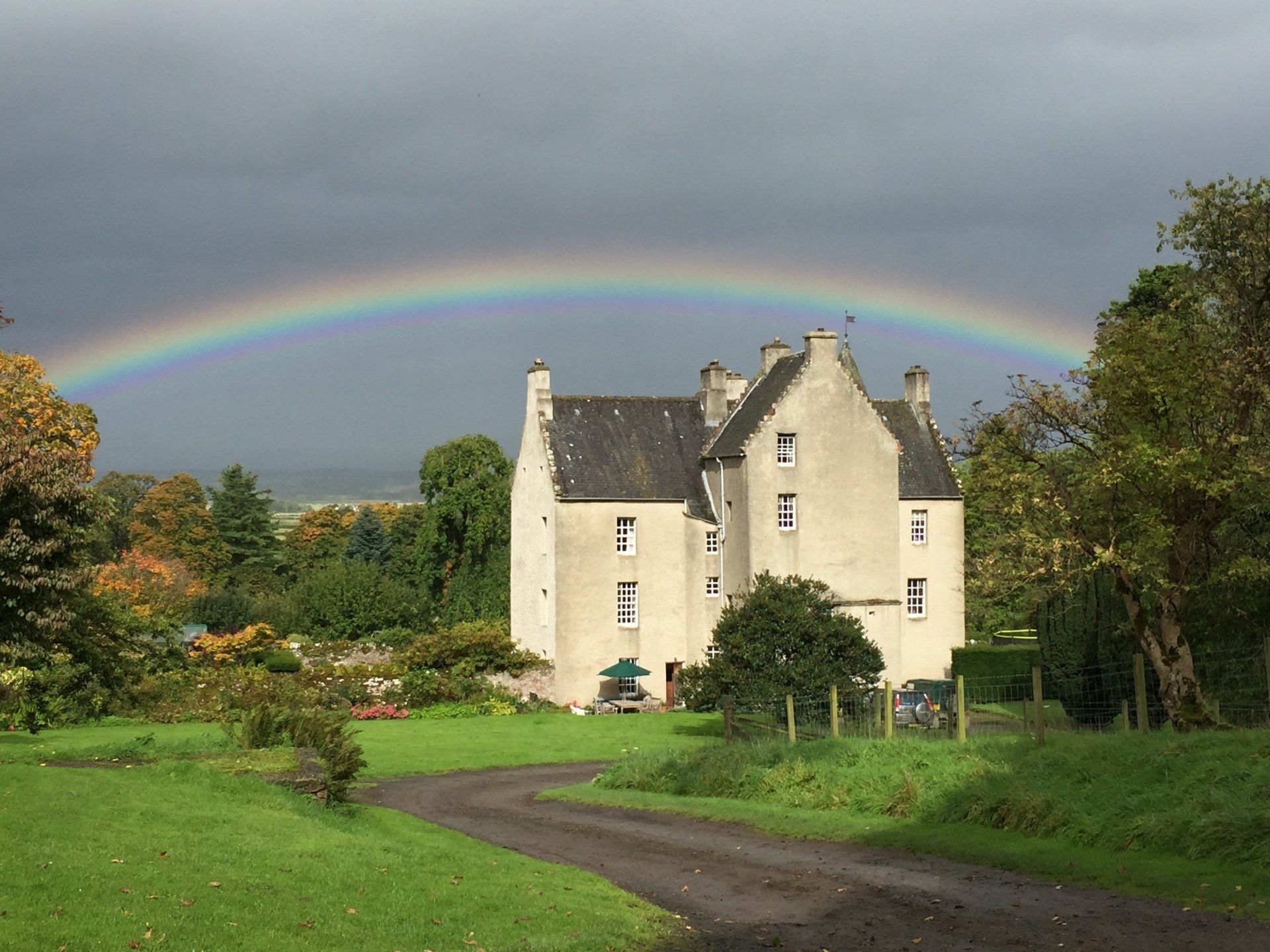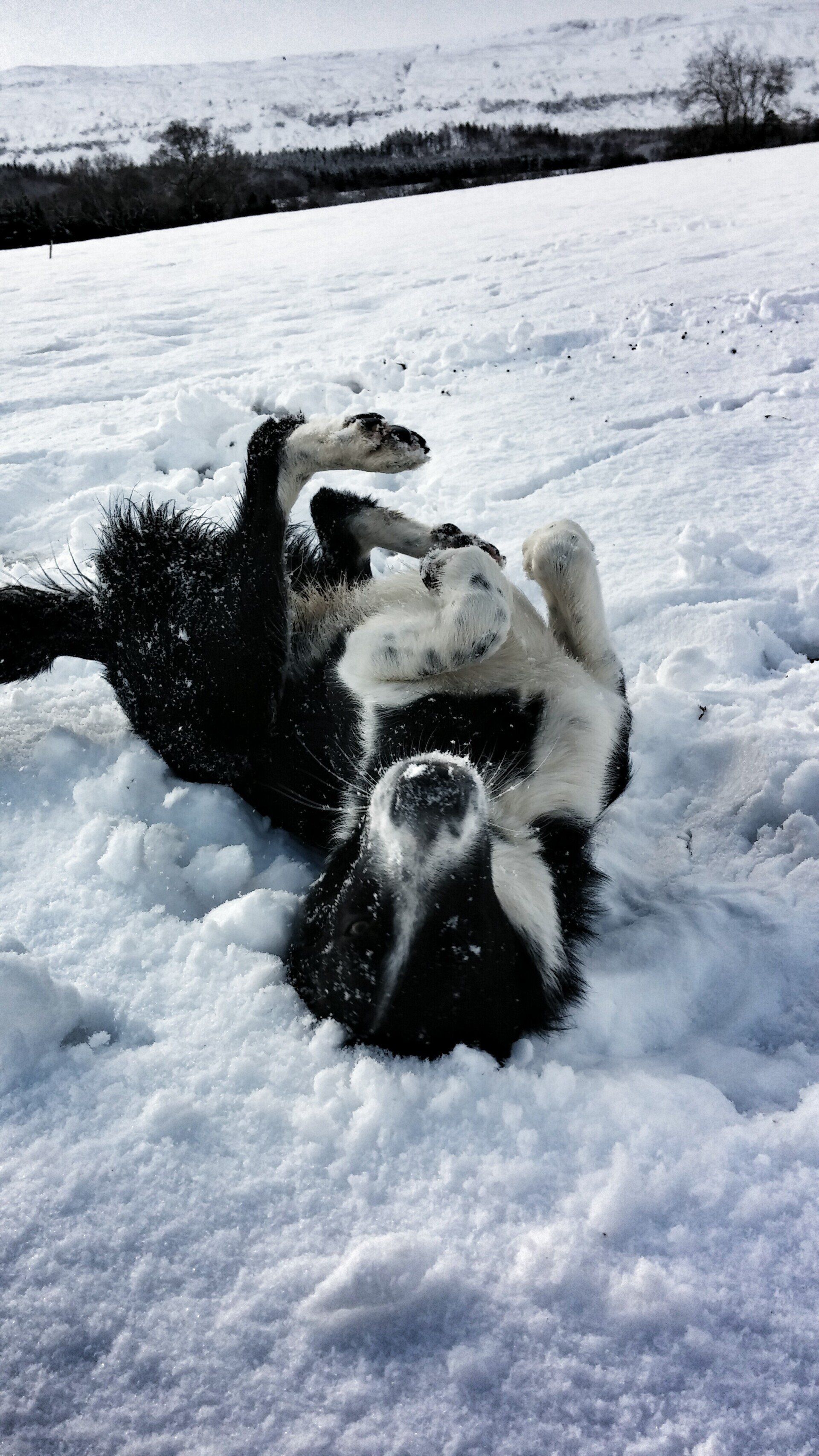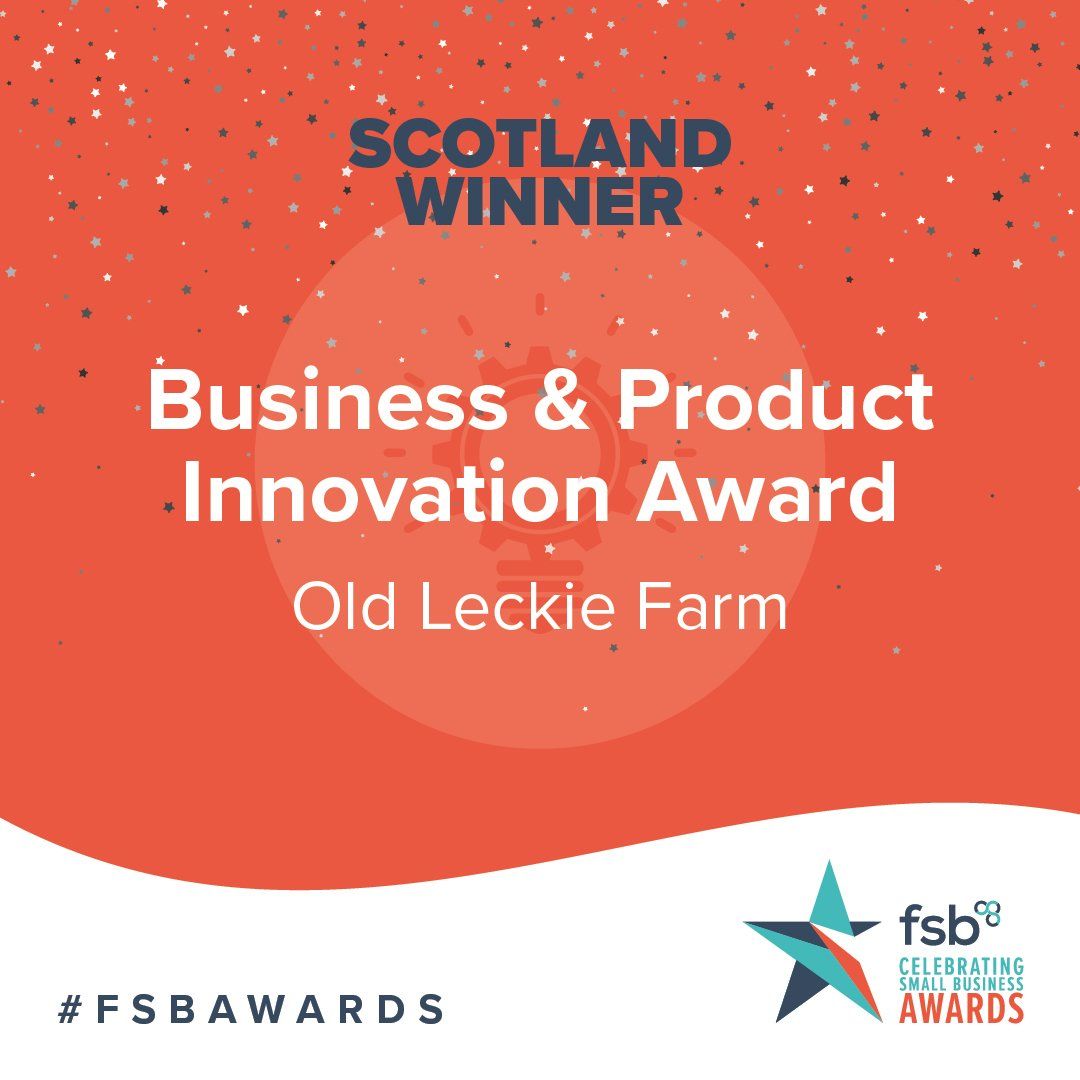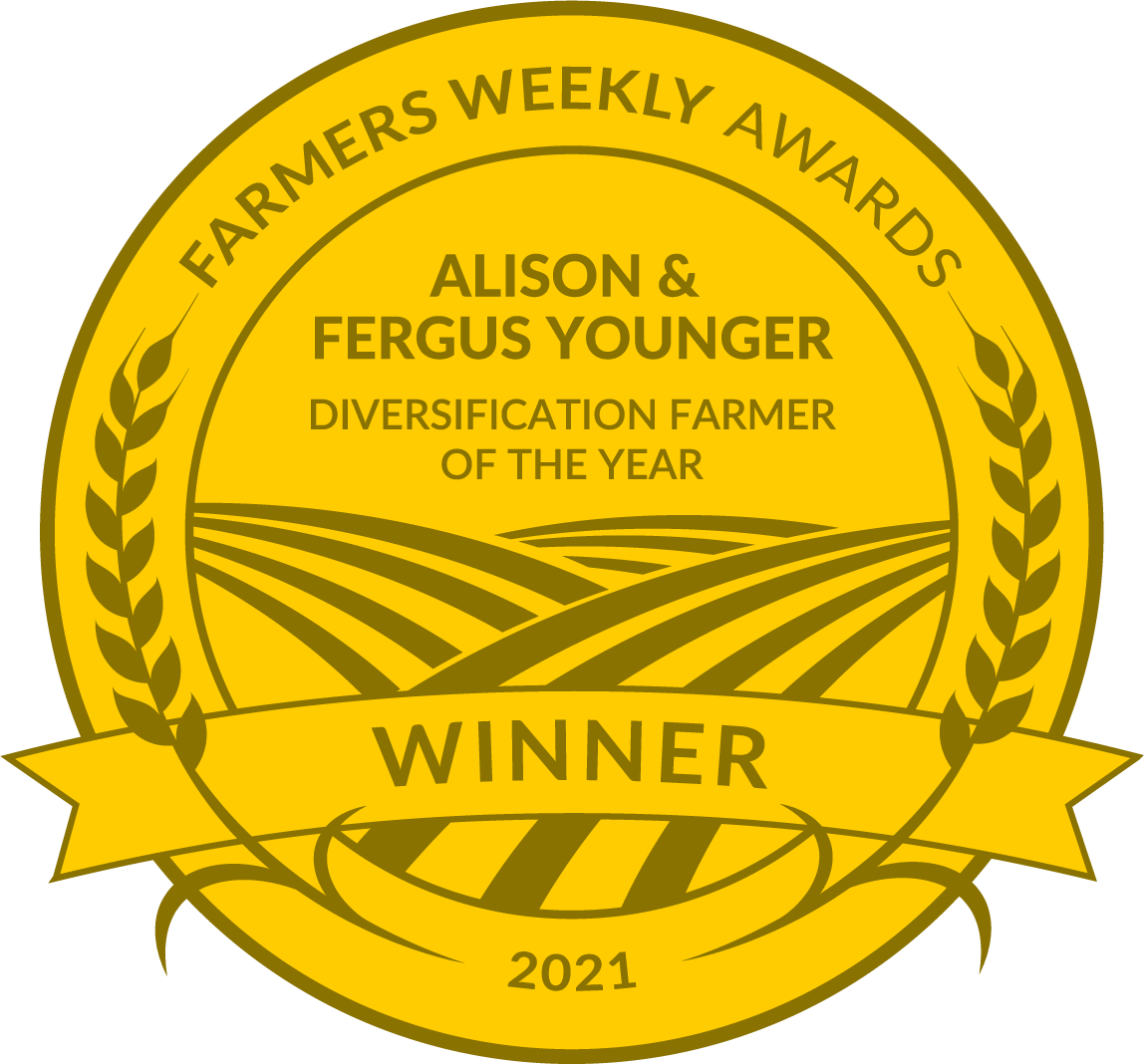Our Farm
About Old Leckie Farm
300 acre Old Leckie Farm is run by Alison and Fergus with the help of their three young children, Fergus’ mother, and their good friend Struan. It is home to 400 Texel/ Llyen sheep, a herd of 60 Limousin cattle, native Highland cattle, 1100 free range hens, a bunch of Tamworth X and Gloucester Old Spot pigs, and a fair few tractors. We produce and sell a range of our produce - pork, beef and lamb plus free range eggs, mixed salad bags and potatoes - all carefully grown and looked after here at Old Leckie.
See our farming calendar for an idea of the farm activities underway at different times of year.
The farm is a fascinating place for old and young alike, we are happy to arrange a tour depending on your interests. Tours of the farm are available for guests and non - guests, small bespoke groups and larger coach tours. If you are not staying at the Farmstay but would like to arrange a tour please get in touch. There are full listings of things to do in the local area – so rain or shine there’s plenty to keep you amused.
Safety is important on working farms - so we do ask that you don’t let the children run around unsupervised, livestock and machines can be unpredictable. We regret that we cannot accommodate dogs.
Interested to see the farm? Join our virtual farm tour on Go Rural Scotland
Farm Diary
There always something interesting going on here at Old Leckie Farm so keep up to date with what’s happening here with our Farm Diary.
January
January can be a very varied - snow / sun / wind / rain / frost / fog - but it is always atmospheric. The views north to the Trossach hills are fantastic - particularly when they are capped with snow. In January we are mostly focused on the sheep flock and their annual scan. Just like humans do we scan each expectant mother to assess how many lambs she is carrying. The sheep are then sprayed with a marker and separated into groups dependent on whether they are carrying one, two or three lambs. Ideally we would have two lambs per ewe as they can then be raised by her to be big and strong. Care needs to be taken not to over feed those having singles as this can lead to difficult lambing if the lambs grows too big. Likewise those having triplets are given extra feed to help support the mother in carrying her extra load. Around the farm the daily pattern of feeding the cows and pigs in the shed, stock checks out in the fields and the regular loading of our biomass boiler continues
February
February is a very peaceful time on the farm. Days are short so even if they are wet and cold it is lovely knowing you have a toasty fire or log burning stove to return home to. The cows seem very peaceful too - they are fed morning and evening and are always pleased to see you in the sheds. Visits in February are a great chance to get up close and personal with the cows - an opportunity which is not so easy once they are out in the fields during the summer.
March
March is a month of contrasts on the farm... sunny, rainy, warm, cold. Rainbows abound. The cows are still pleased to be in the sheds, steadily munching through last years crop of silage, whilst the sheep out in the fields are fed extra hay as they wait for the soil to warm and the grass begin to grow. March also brings the start of our spring calving period - about 20 of our cows have their young at this time of year so there are regular visits to the sheds to check on them, and if you are lucky you can get a close up view of the calf being born
April
April on the farm is all about lambing - we have about 300 ewes giving birth to almost 600 lambs so it is busy, busy, busy! Many of our ewes lamb out in the field, and those expecting 3 or more come into the big shed where we can keep a close eye on them. There is a constant round of checking, feeding and moving lambs to keep even the most energetic farmer busy. If ewes and lambs need a bit of extra help we bring them into the pens in the steading so visitors need to be prepared for some background bleating! The lambs aren't the only new arrivals - roe deer kids begin to make an appearance under the watchful eye of their mothers.
May
May is a fantastic month to visit the farm - everything is fresh and green and growing. Lambs are getting fat on tender grass and the cows dance as they get back to the fields after a long winter in the shed. Swallows arrive to build their nests and the first deer calves make an appearance. Our free range laying hens are out all year round, but they too enjoy the dry weather as they build dust baths and seek out tasty morsels in their outside runs.
June
June brings good weather, an ample supply of our home grown Leckie Leaves salad and the first cut of our grass for the cows winter feed. Once wrapped it starts to ferment and by the time the cows come in over winter it supplies them with tasty food to see them through 'til spring. We make about 600 bales of silage in all so it is a really busy time with lots of tractors moving around!
July
July often brings great summer weather - blue sky days and beautiful sunsets over the Trossachs. A regular feature in the July calendar is the annual sheep clip - the sheep and tups love getting rid of their thick winter coats, and can be seen skipping out of the shed a mere shadow of their former selves. July also sees the first of our hay getting made - it needs to be drier than silage when baled so you need a good few days to cut, turn and row up.
August
August brings crossed fingers, crossed feet, crossed arms and anything else you can cross in the hope that we get long periods of lovely dry sunny weather to help our hay making. You need a good 4 days of unbroken weather to get great hay. Once cut it goes through regular daily cycles of being turned and aired and moisture tested to get it to the right dryness to bale. Once it is baled it is then stacked in the field to allow it to continue to dry until it is moved into the shed. This means lots of tractor action around the farm and much busy-ness - we can be out in the field until late loading bales, and bringing hay in - especially if the weather is threatening to break.
We have been really fortunate the last few years to have fantastic weather through August and stress free hay making - though we are always minded of the old saying that "there is more bad hay made in a good year, than good hay in a bad year"... bale too soon and the bale can heat up and rot (or even start a fire!). We make a mixture of round bales which are moved by the telehandler or tractor, and smaller rectangular bales. These are much easier to move around and we use them to feed out to the sheep over winter, and we also sell some to horse owners looking for good quality hay.
Once baled into rectangles these smaller bales are then stacked in the field in groups of 50 or 100 (layers of 10, 5 high) to dry out further for a good week or so. They are covered with coloured 'haps' to protect from the worst of the weather. At this time of year the road into Stirling becomes guarded by these stack 'sentries' which look like they are about to march and lay siege on Stirling Castle. Happing the hay is a really fun activity and one which our farmstay guests seem to love being involved with.
September
The farm in September is one of my favourite times... The nights are still mild but starting to darken a little earlier so the fire pit comes into its own, and the pigs are often fed in the half light of darkening mornings. There is something really special about the dawn and dusk light of September here as the trees start to turn colour and the sunsets bounce of the hills to the north.Swallows and house martins head off for their winter migration leaving the pheasants to rule the roost.
September is really like a second spring clean - we are getting our house in order: a quick stock check of hay and silage; buy in all the straw we need for the cattle's wintering in the sheds; spean (take away) the lambs from their mothers to give the ewes time to get into good shape before they go to the tup in October.
October
October means barley harvest and farm calves who are a year and a year and half old go off to market. It can be a nerve wracking time as you wait to see what the trade is like. The sale process starts a few days before the market days when the calves are weighed and scrutinised to see how best to batch them to go through the ring. They are also given hair cuts to show them at there best - their fringes and tails are clipped and their ear hairs are trimmed - if only Fergus was so eager to groom himself in a similar manner!
Once the calves arrive at market they are split into pens in their batches and given a good brushing. As they move through to the sale ring Fergus goes down and into the ring himself - a very visual way to show that he is proud of the quality of our produce. It can be hard to keep track of the bidding and it all happens very quickly so it its suddenly over for another year and we retreat to the market café for a well deserved cup of tea and a bowl of warming soup.
November
November is a funny time of year - you would think on the farm that after the hive of summer activities cutting silage and making hay that November would be a quiet month... but not so. Our free range eggs are laid year round so we have the daily egg collection and packing, ready for delivery. It's one of my favourite times of the year as the cattle come back into the sheds for the winter and they seem really pleased to be dry, well bedded on piles of straw and well fed with the hard earned silage made in early summer. Its hard to describe the pleasure you get from wandering into the sheds in the dark of night and listening to the contented ladies chewing the cud whilst soft plumes of breath head skywards into the cold atmosphere. Our visitors young and old all really enjoy the tour of the sheds which lets them get much more up close and personal with the cattle than is possible when they are out in the fields.
December
Weather is the key watchword in December. Out in the fields there is a constant shifting around of the sheep and lambs to ensure they are getting access to the last of the seasons grass and, on snowy or frosty mornings they get hay delivered out to them. The morning sun may take a while to arrive but when it does it can be simply stunning, as can the red sunsets on the Trossach hills to the north. The male sheep (tups) which were put out into the fields in October are finishing their annual business with the female sheep. To help us keep track of which sheep have got pregnant when the tups are 'keeled' - they are marked up with different colours which rubs off on the sheep. The fields end up with a mixture of brightly coloured sheeps bottoms. Daily stock checks are keeping a close eye on the performance and health of the tups at this critical stage.
In the sheds meanwhile our autumn calving continues to gather pace with often 2 or 3 calves being born on the same day. Often calves are born at night, but sometimes guests are lucky enough to see the start, middle, or end of a calving.
